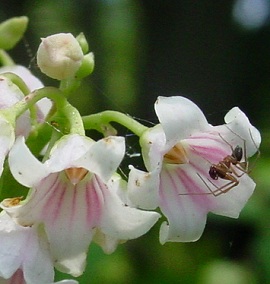
Discourage New Growth
Before the beginning of winter, coax the roses into dormancy. In early autumn or at least months before the first annual frost date in your area, stop fertilizing and pruning. Fertilizing encourages roses to produce tender new growth that will most certainly not survive the cold.
Water, Clean, Wrap
Water the soil around the rose bushes after the first frost. Once the ground has frozen, the plant will have to take care of itself, so make sure that you give it a good soaking going into the season. Clear the ground around the bushes of fallen leaves and insects. This will prevent diseases and insects from overwintering.
Climbing roses need special care because they are at risk from strong, drying winds. To protect them, you can wrap the canes with straw for insulation. Alternatively, you can remove them from the trellis, bundle them together, and fasten them to the ground with landscaping pins. Cover them with a layer of mulch for added protection.
Protect the Graft Union
To protect the roots and the graft union, mound 6 to 12 inches of compost on all sides of the base of the plant. The graft should be at the surface or just below it. During milder winters, you can surround the rose with wire and fill the cage created with mulch. When temperatures reach ten degrees below zero, the mound made should be about a foot tall. For added protection, the whole plant can be covered with burlap or a heavy cloth.
Provide Extra Protection
Some roses, such as Bermudas, Noisettes, Grandifloras, Teas, and Hybrid Teas, are not able to adapt well to colder winters. For these plants, extra winter protection must be provided. You have three options: (1) bury the plant, (2) build a protective cage around the plant, or (3) transplant into a container and store indoors.
Mulch
It isn't the cold that kills rose plants during winter. It's the repeated thawing and freezing that puts a strain on the plants and kills the roots. Also, the winter sun and the dry winds sap moisture from the canes and cause winter damage. Mulching using peat moss, straw, or other materials is a recommended practice except in the extreme south, where temperatures do not get cold enough to warrant extra protection for the plants. The mulch controls the soil temperature and moderates the effects of constant freezing and thawing. After the first frost, pull the soil up around the plant while taking care not to damage the roots. Mulch after the ground is frozen.



